A Concert for Peace with Violins of Hope
January 12, 2025 at 3 PM | New Jersey Performing Arts Center, Newark
Tickets and more information available HERE. Concert tickets available at NJPAC.org.
ABOUT THE VIOLINS
All images shown below are courtesy of Violins of Hope. For more information, visit https://www.violins-of-hope.com/
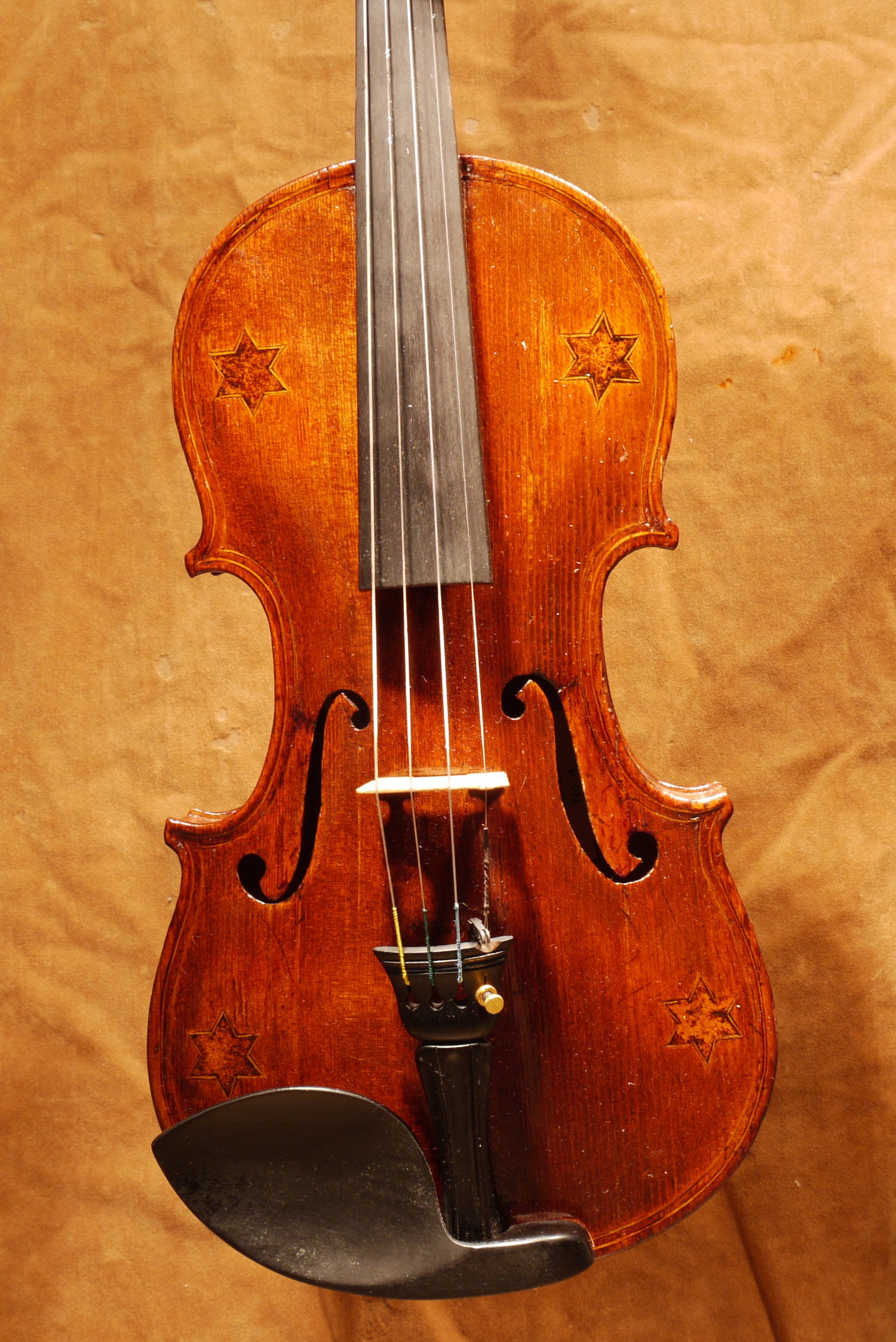
The Zimermann Five Stars of David Violin, Warsaw 1920’s.
Yaacov Zimermann worked in Warsaw and had many clients Jews and Christians. He was known to support young violinists such as Michel Swalbe (see former violin) and Ida Haendle, the child prodigy who turned a world known virtuoso.
This hand-made violin is outstanding because it is unusually decorated by five Stars of David, four on the upper deck and one on the back. The decorations were made with glue mixed with black powder, usually made to order.
The violin was found in very bad condition. The varnish was almost non-existent and it gave the impression of having been played most of the time in open air, rain and shine. It was repaired meticulously for a year and a half and now serves as a concert instrument.
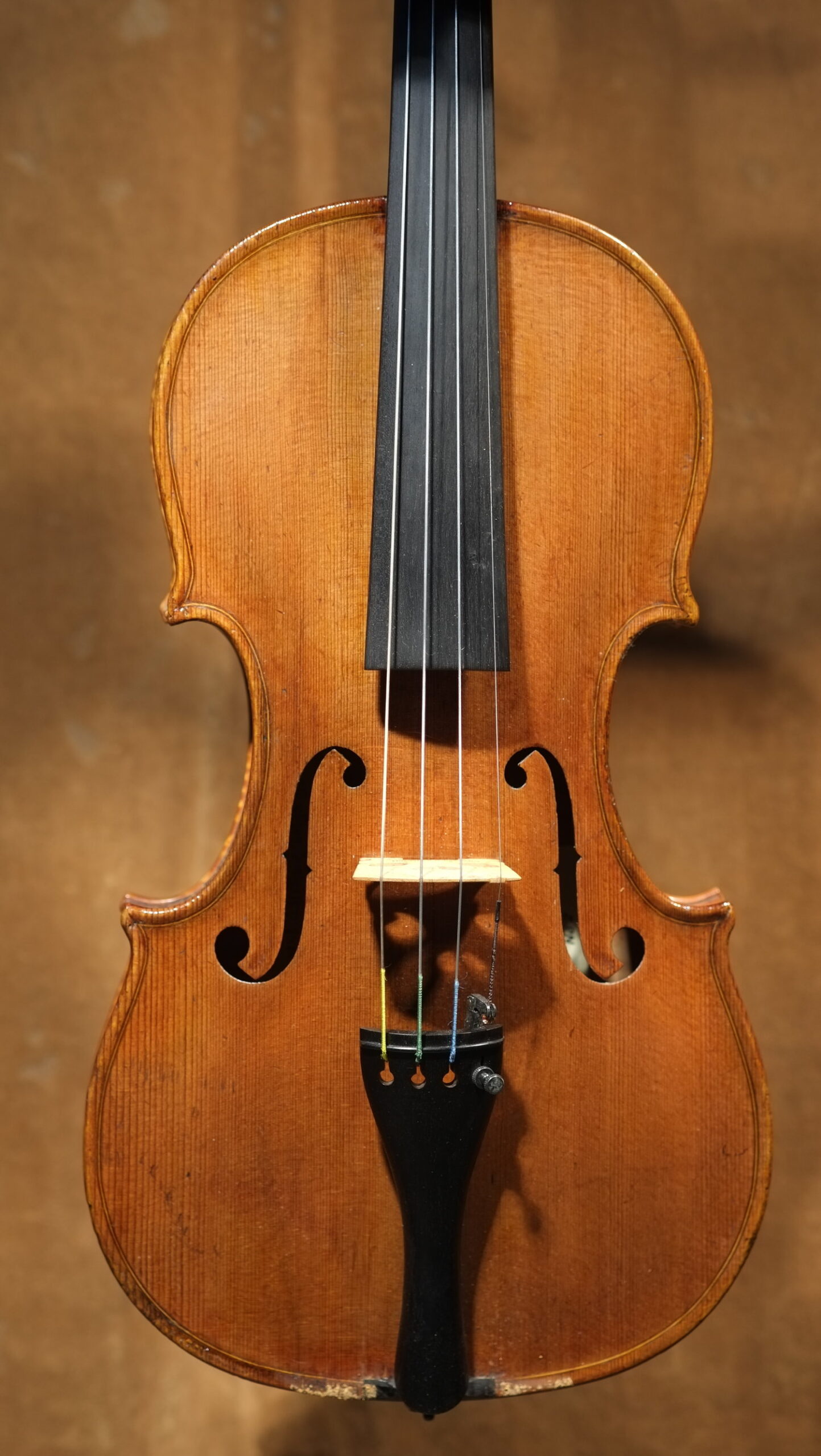
The Zimermann-Krongold Violin, Warsaw, 1924.
Yaacov Zimermann was one of the first Jewish violin makers in Warsaw. Shimon Krongold was a wealthy industrialist there and an amateur violinist, who ordered a violin made by Zimermann. Zimermann made him a fine instrument with a lovely Star of David inlaid on the back. Inside the violin he glued a label in Yiddish:
I made this violin for my loyal friend Shimon Krongold, Yaacov Zimermann, Warsaw, 1924.
When war broke in 1939 Shimon managed to escape to Russia and ended up in Tashkent, Uzbekistan, where he died of typhus towards the end of the war. A few years later a survivor from Tashkent came to the Krongold family in Jerusalem with the story of his death and a violin in hand. Shimon was the uncle of the Krongolds in Jerusalem, who paid for the violin and kept it in memory of their uncle.
It is important to note that before the war Shimon Krongold helped some Jewish prodigal children, among them Michel Swalbe, who used to get music lessons in Krongold’s home. Swalbe later became the leading violinist of the Berlin Philharmonic Orchestra and remembered Krongold as his benefactor.
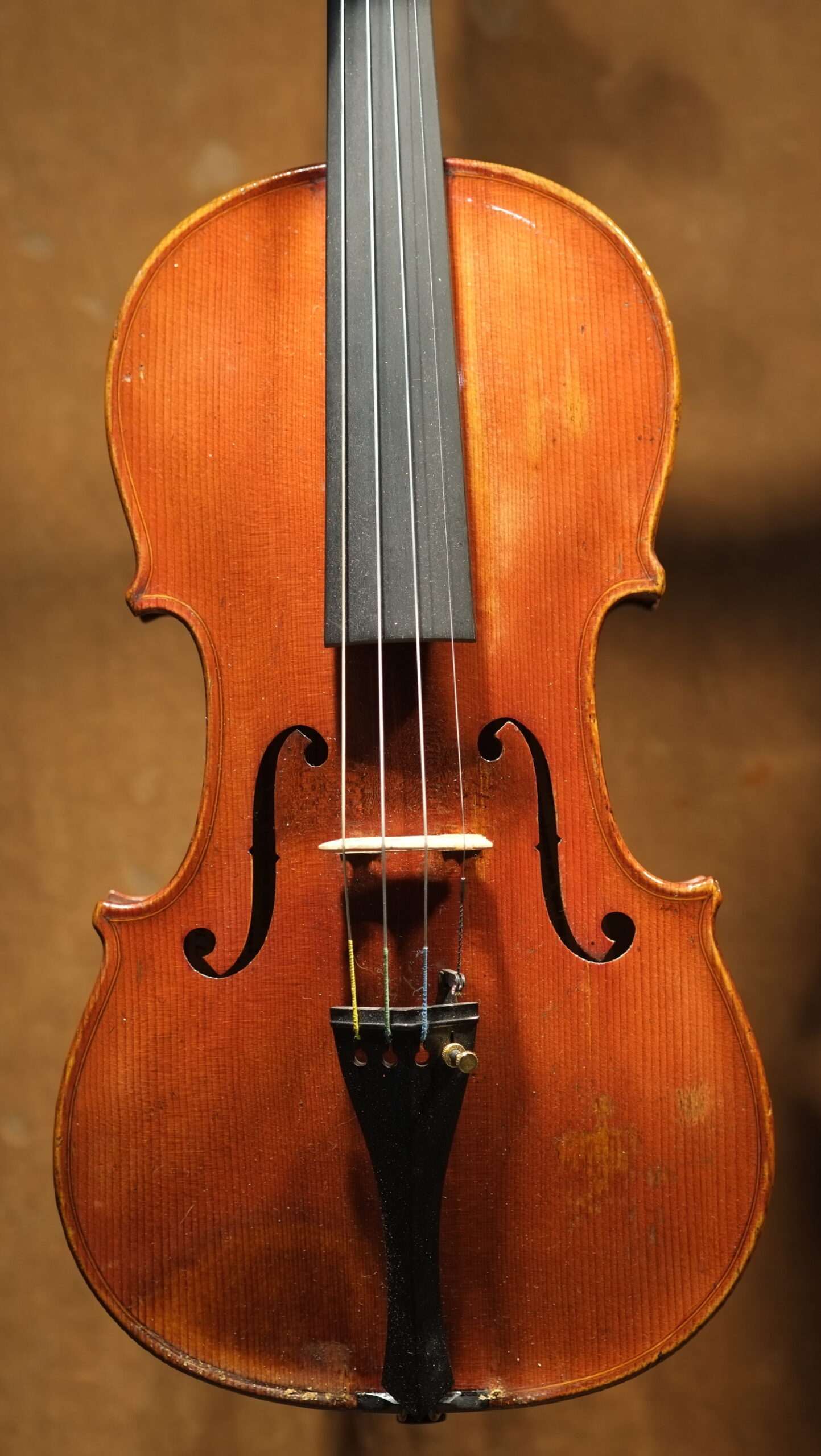
The Feivel Wininger Violin made by Brother Placht workshop in Schonbach, Germany around 1880.
Feivel Wininger lived in Romania with his elderly parents, wife and baby daughter, Helen. In October 1941 Feivel and thousands other Jews were deported by train to the swamp land of Transnistria and further into the Ukrain. The suffering and horrors of this exodus was harsh, but Feivel never gave up.
Finally, in the Ukrainian ghetto of Shargorod, he found a way to survive. A famous judge who was an amateur violinist recognized Feivel as the gifted child-violinist he was years ago and gave him his Italian, Amati violin. Feivel, who labored chopping wood for local Ukrainians tried the violin and his life changed. All of a sudden there was music. And hope.
A local Ukrainian peasant let him play at weddings and holidays in exchange of food and leftovers. Feivel lost his precious violin a short while later, but found a way to bring food to his family and some 17 people playing Ukrainian and Romanian music on another violin.
Many years later, in Israel, Helen brought her father’s violin to be repaired in the Weinstein’s workshop in Tel Aviv, so her old father could play again. Upon hearing this incredible story, the Weinsteins repaired the violin and since then, it is a part of Violins of Hope and serves as a memorial to a man of courage and industry, a man of vision and kindness.
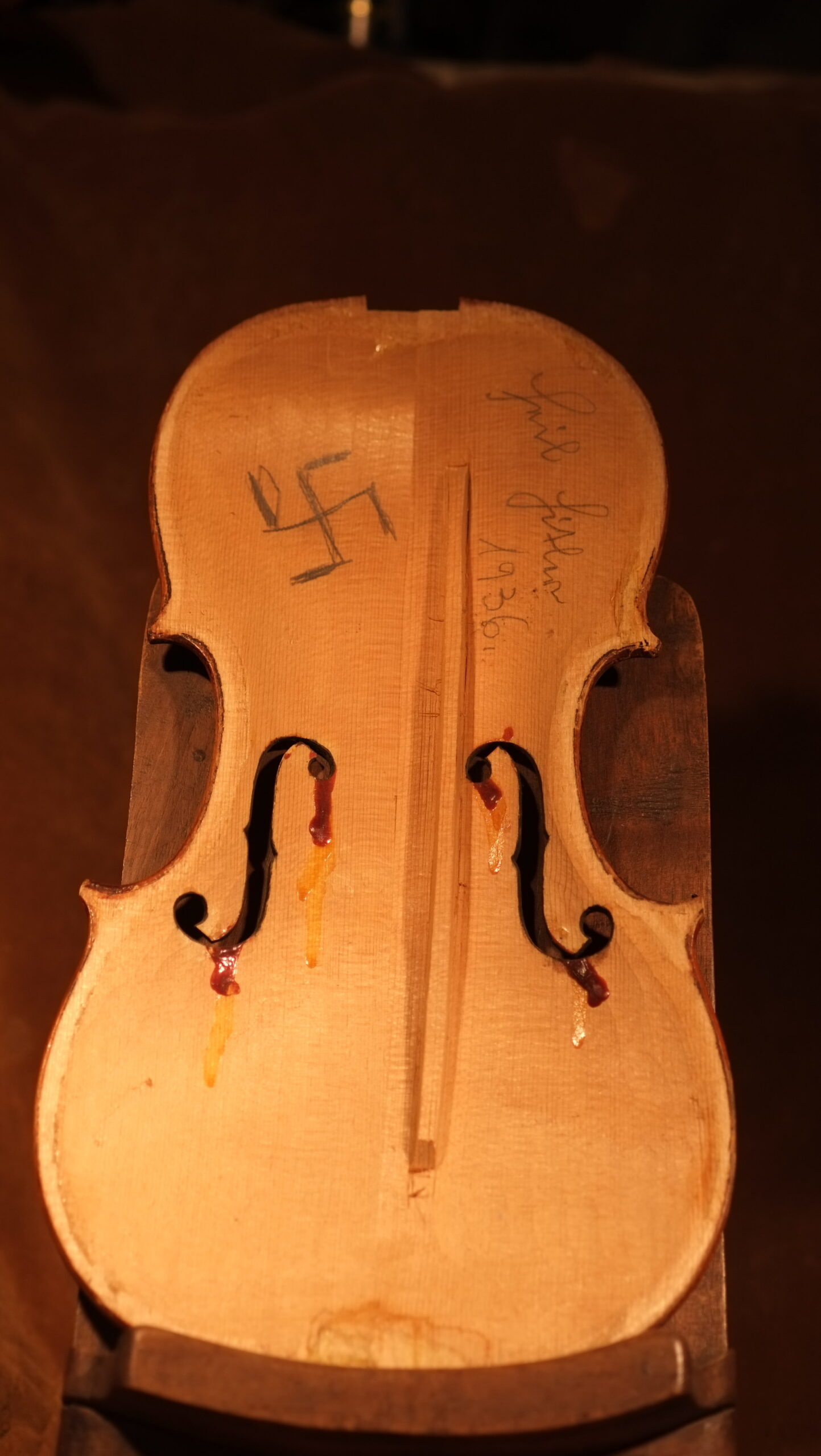
The Heil Hitler Violin.
This is a non-distinguished instrument, yet a puzzle. We guess that it was owned by a Jewish musician or an amateur who needed a minor repair job done in 1936. The “craftsman” opened the violin for no apparent reason and inscribed on it’s upper deck: Heil Hitler, 1936, adding a big swastika. He later closed the violin and handed it back to the owner, who played on it for years, unaware of the inscription.
A few years ago the violin was bought by an American violin maker in Washington DC, who opened it and was absolutely astonished to discover it’s insides. The maker’s first instinct was – to burn the instrument, but on a second thought he contacted the Weinsteins in Tel Aviv and donated it to the Violins of Hope project. Today it is a part of our collection of instruments, but not to be repaired or played. Ever.
It is important to note that the majority of German violins makers were not Nazis. Many were known to support Jewish musicians who were considered to be their very talented and devoted clients and friends.
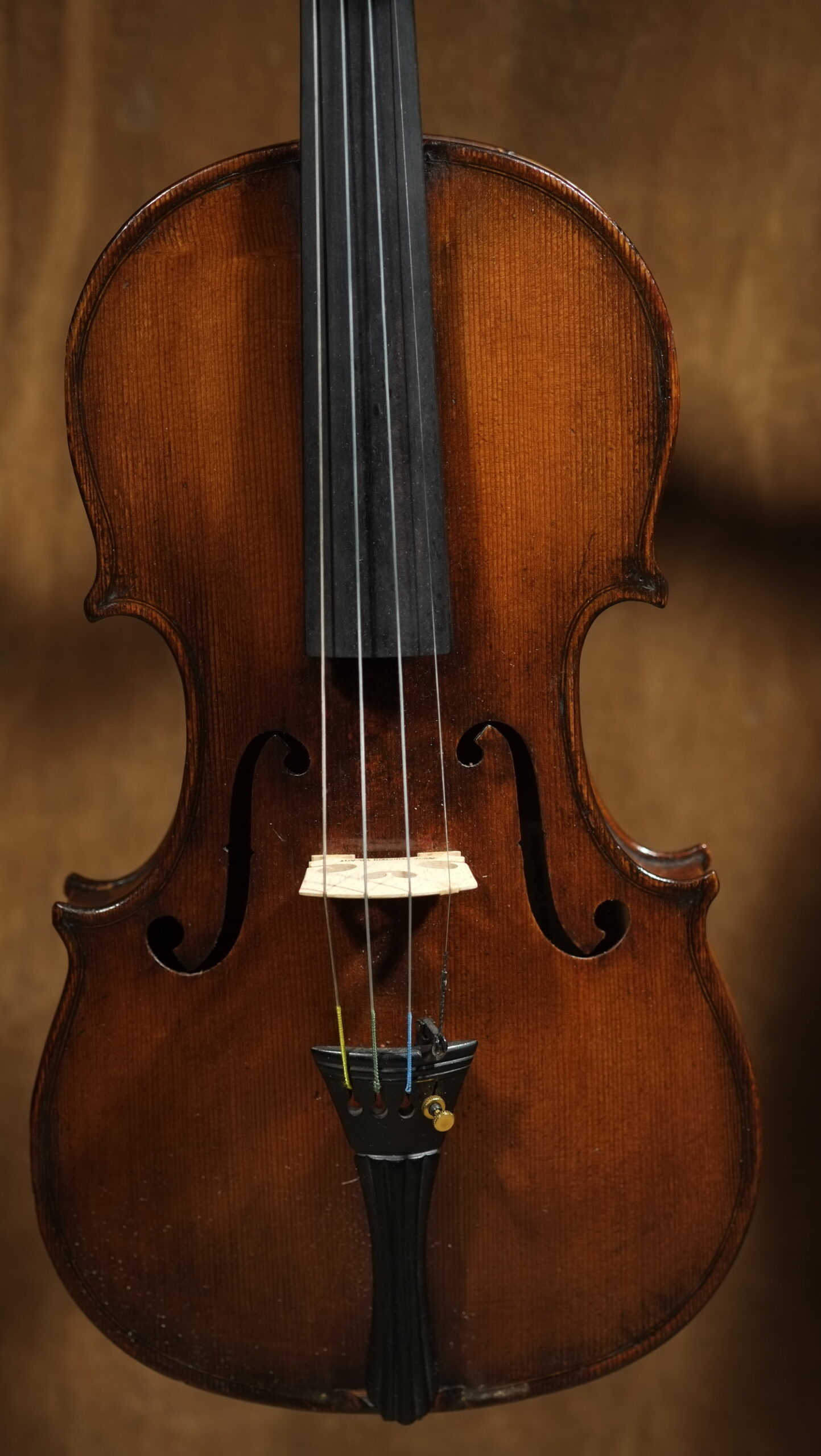
The Haftel Violin made by AugustDarte in Mirecourt, France around 1870.
This violin belonged to Zvi Haftel, the first concert master of the Palestine Orchestra, later to become the Israel Philharmonic Orchestra, IPO. It is a French instrument made by a famous maker: August Darte in the town of Mirecourt around 1870.
Heinrich (Zvi) Haftel was one of about 100 musicians gathered by Bronislav Hubermann all over Europe in 1936 and brought to Palestine. Haftel was a distinguished violinist before the war and joined Hubermann after he lost his job in a German orchestra. Hubermann’s vision to create an-all-Jewish orchestra in Palestine saved the lives of many musicians and their families.
Haftel’s violin is one of the best in the collection of Violins of Hope.
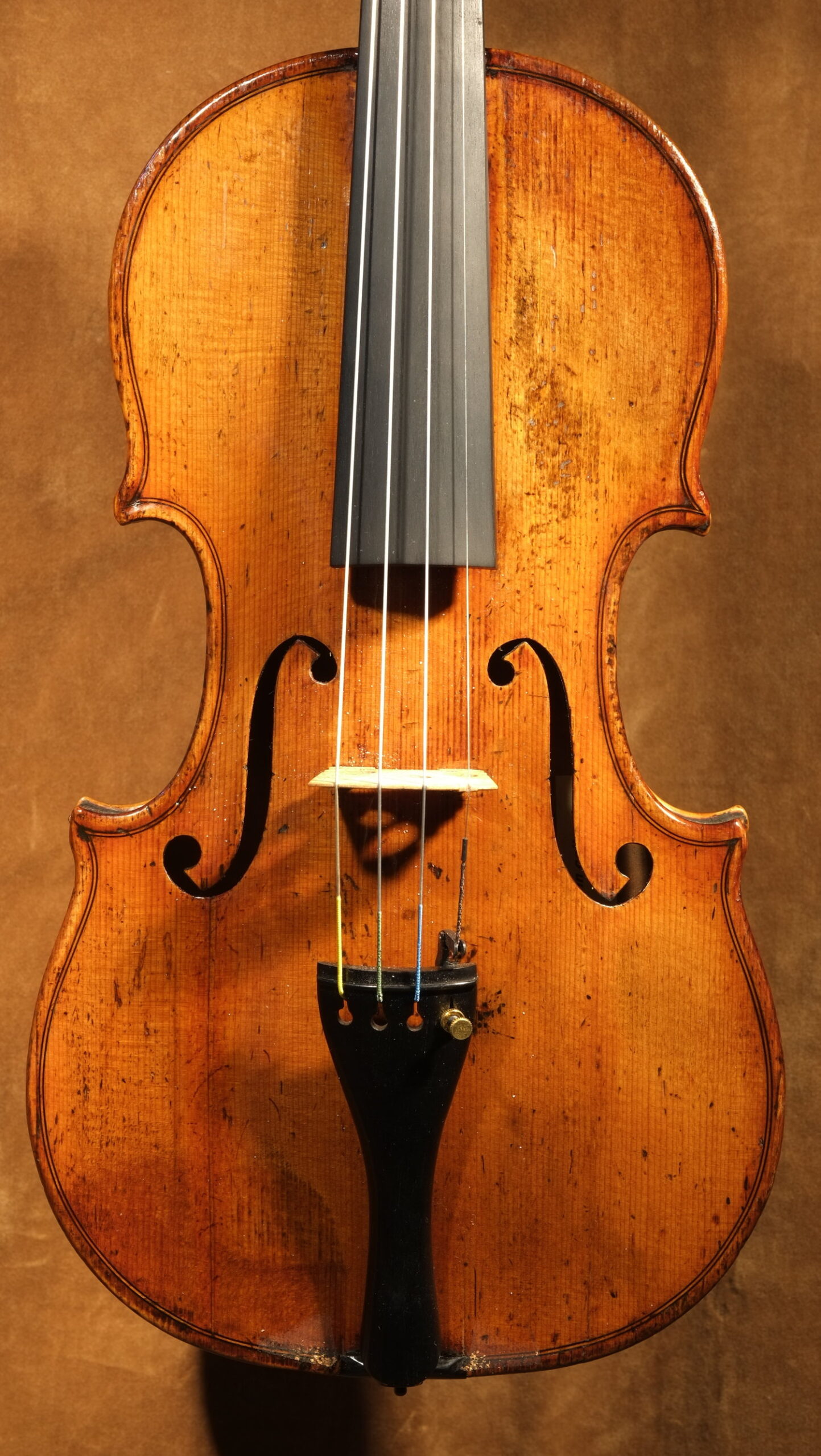
Jacob Hakkert violin, Mirecourt, France 1906.
This is the first hand-made violin by a famous Dutch Jewish maker, Jacob Hakkert, who studied in the violin makers’ school in Mirecourt, in the north of France. He joined the family business shop in Rotterdam, Holland, around 1910. Hakkert was an active maker who made violins, violas and cellos. He was also had a reputation for developing and selling good quality strings which were popular among many musicians.
Hakkert was deported to Auschwitz where he died on May 22, 1944.

The Haftel Violin made by AugustDarte in Mirecourt, France around 1870.
This violin belonged to Zvi Haftel, the first concert master of the Palestine Orchestra, later to become the Israel Philharmonic Orchestra, IPO. It is a French instrument made by a famous maker: August Darte in the town of Mirecourt around 1870.
Heinrich (Zvi) Haftel was one of about 100 musicians gathered by Bronislav Hubermann all over Europe in 1936 and brought to Palestine. Haftel was a distinguished violinist before the war and joined Hubermann after he lost his job in a German orchestra. Hubermann’s vision to create an-all-Jewish orchestra in Palestine saved the lives of many musicians and their families.
Haftel’s violin is one of the best in the collection of Violins of Hope.
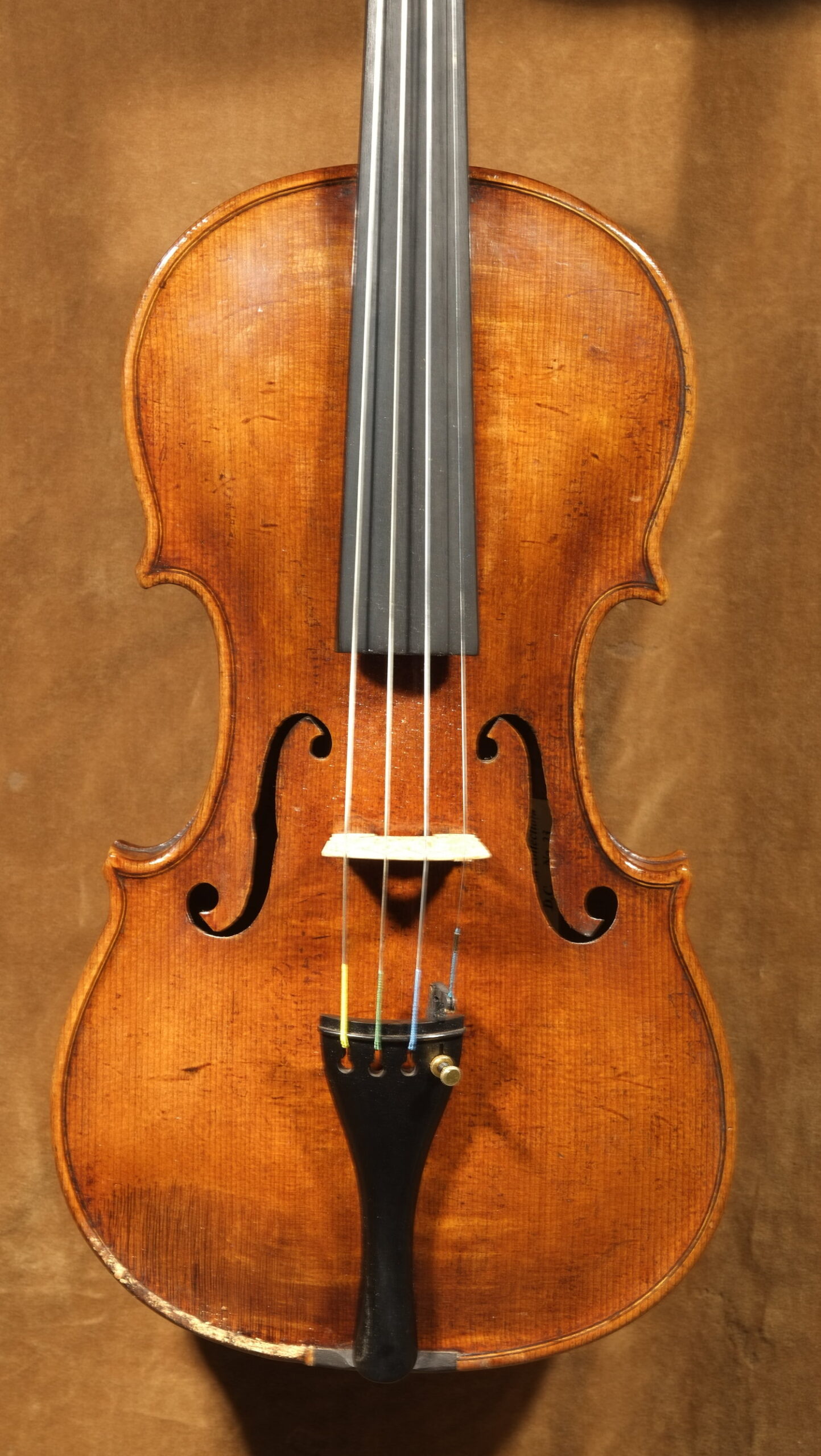
The Auschwitz Violin, made in the workshop of Schweitzer in Germany, around 1850.
This instrument was originally owned by an inmate who played in the men orchestra at the concentration camp in Auschwitz. And survived.
Abraham Davidowitz, who fled Poland to Russia in 1939, later returned to post-war Germany and worked for the Joint near Munich, Germany, helping displaced Jews living in DP (Displaced People) camps.
One day a sad man approached Abraham and offered him his violin, as he had no money at all. Abraham paid 50 $ for the violin, hoping that his little son, Freddy, will play it when he grows up.
Many years later Freddy heard about the Violins of Hope project of the Weinsteins and donated his instruments to be fully restored and come back to life. Since then this violin, now restored to perfect condition, has been played in concerts by the best musicians all over the world. Almost.
It is important to note that such instruments were very popular by Jews in Eastern Europe, as they were relatively cheap and made for amateurs. This particular violin was made in Saxony or Tirol in a German workshop. It carries a false label: J.B. Schweitzer, who was a famous maker in his day.
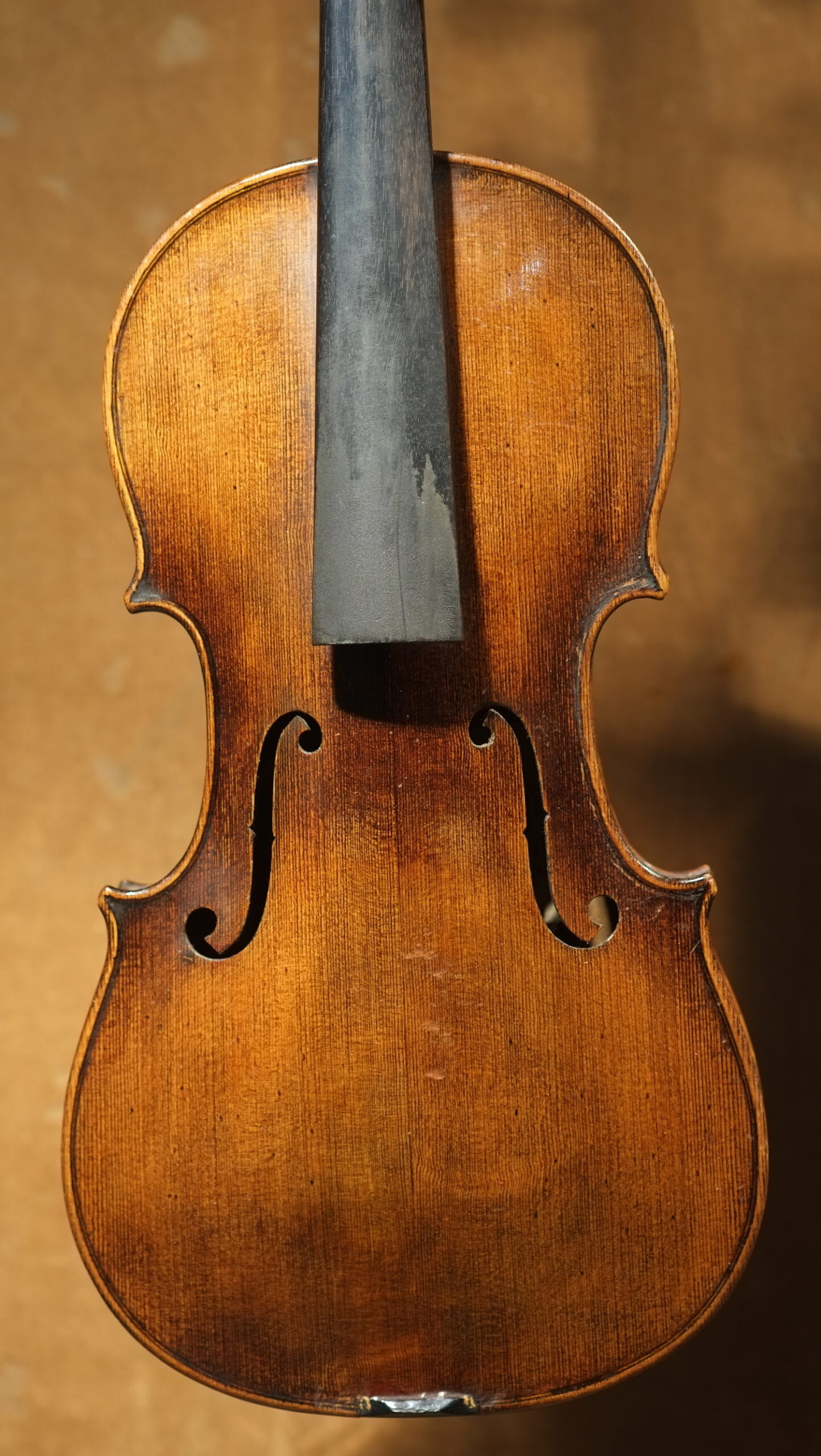
The Friedman Violin
This is a typical story of a Jewish family in Romania. Two sisters, 9 and 11 shared the same violin. Both took music lessons with a nice teacher while their mother watched over and made sure they practice every day. During the war, being transported from one place to another, they lost touch with their parents who kept the violin as a souvenir of their little talented girls.
When the war ended the girls were taken by Aliyat HaNoar (children immigration organization) and sent by boat to Palestine. But this was not the end of their travels and troubles. British police, then in control of Palestine, sent the boat and all immigrants to a camp in Cyprus. Months later the sisters were reunited with their parents and the long gone violin when they arrived in Israel with thousands other survivors who were interned in Cyprus until the establishment of the state of Israel in May 15th, 1948.
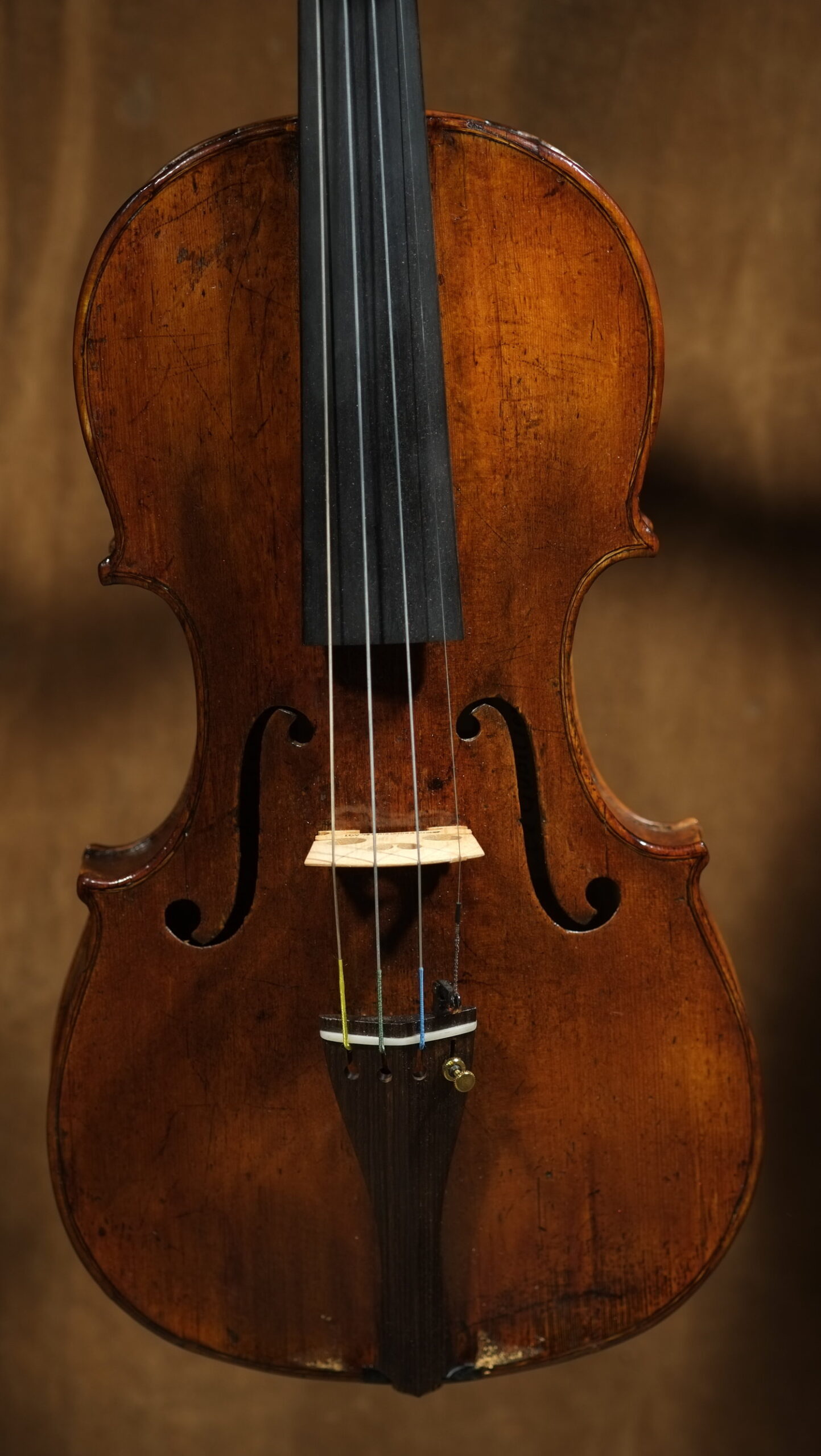
The Morpurgo Violin: A Refugee Violin
A few years ago a 90-something years old lovely lady and her three daughters came to our workshop in Tel Aviv. Seniora Morpurgo and her daughters brought us the much treasured violin of Gualtiero Morpurgo, the head of the family from Milan, Italy.
The Morpurgos are an ancient and respected Jewish family. They go back some 500 years in the north of Italy. When still a young child, Gualtiero’smotherhanded him a violin:
“You may not become a famous violinist, but the music will help you in desperate moments of life, and will widen your horizons. Do not give up, sooner or later it will prove me right”.
That moment arrived without warning. Gualtiero’s motherwas forced to board the first train, wagon 06 at the Central Station in Milan. Destination: Auschwitz. Her son, Gualtiero was sent to a forced labor camp and loyal to his mother – took the violin along and often found hope and strength while playing Bach’s Partitas with frozen fingers after a long day’s work in harsh conditions.
Born in Ancona, Gualtiero graduated engineering school and worked in the shipyards of Genoa. When the war ended he volunteered to use his engineering skills to build and set up ships for Aliya Bet, helping survivors of the war sail illegally to Palestine. For this he was awarded in 1992 the Medal of Jerusalem by Yitzhak Rabin.
Gualtiero never stopped playing. He was 97 when he could play no more and put his life-long companion in its case. After his death in 2012 his widow and three daughters attended the Violins of Hope concert in Rome and decided that this is where it belongs – in the hands of devoted musicians in fine concert halls.
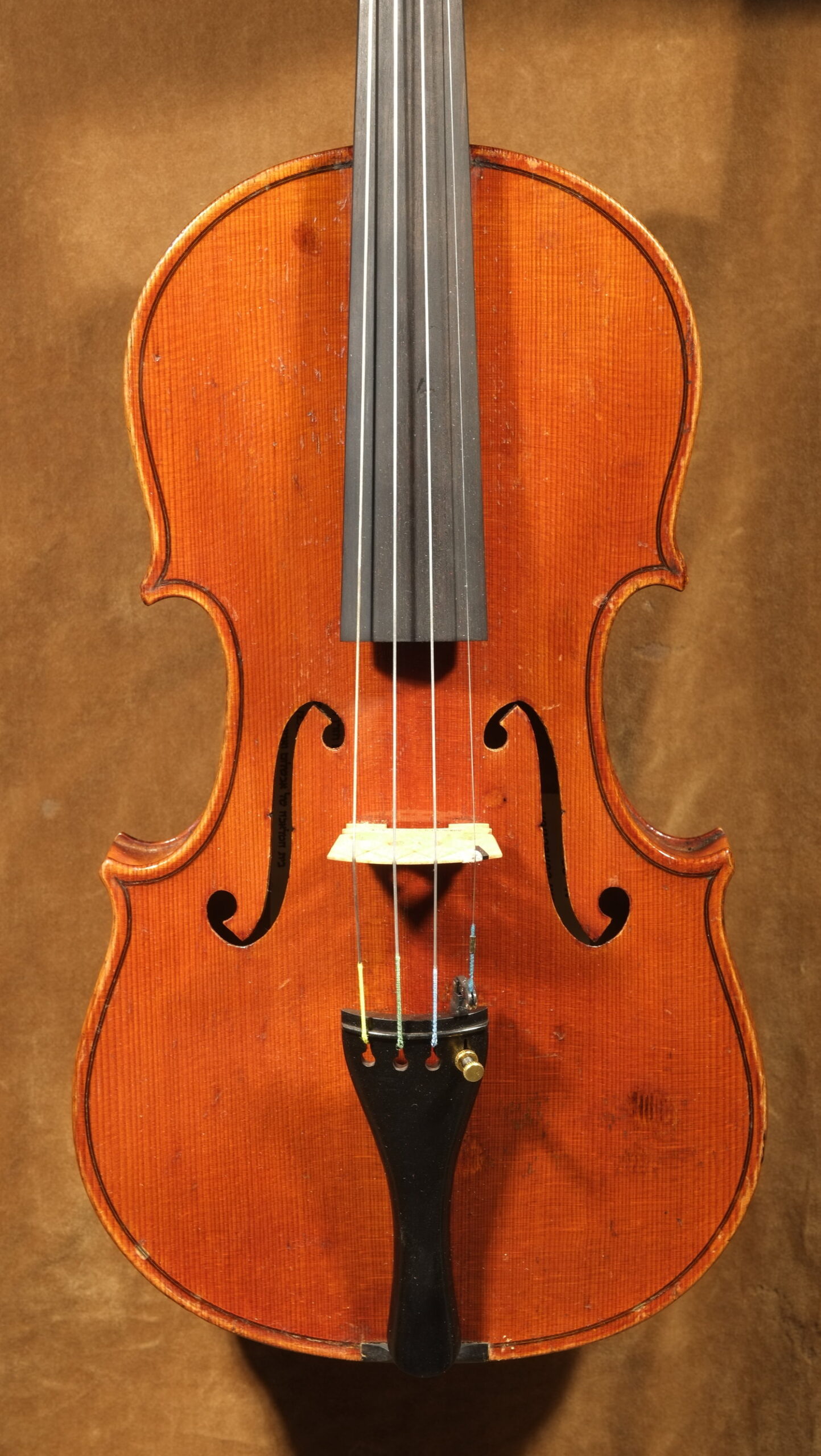
The Train Violin: from Lyon, France, made in Germany around 1900.
In July 1942 thousands of Jews were arrested in Paris and sent by cattle trains to concentration camps in the East, most of them to Auschwitz. On one of the packed trains was a man holding a violin. When the train stopped somewhere along the sad roads of France, the man heard voices speaking French, a few men were working on the railways fixing them and walking at leisure. The man in the train cried out:
“In the place where I now go – I don’t need a violin. Here, take my violin so it may live!”
The man threw his violin out the narrow window. It landed on the rails and was picked up by one of the French workers. For many years the violin had no life. No one played it. No one had any use for it. Years later the worker passed away and his children found the abandoned violin in the attic. They soon looked to sell it to a local maker in the South of France and told him the story they heard from their father. The French violin maker heard about Violins of Hope and gave it to us, so the violin will live.
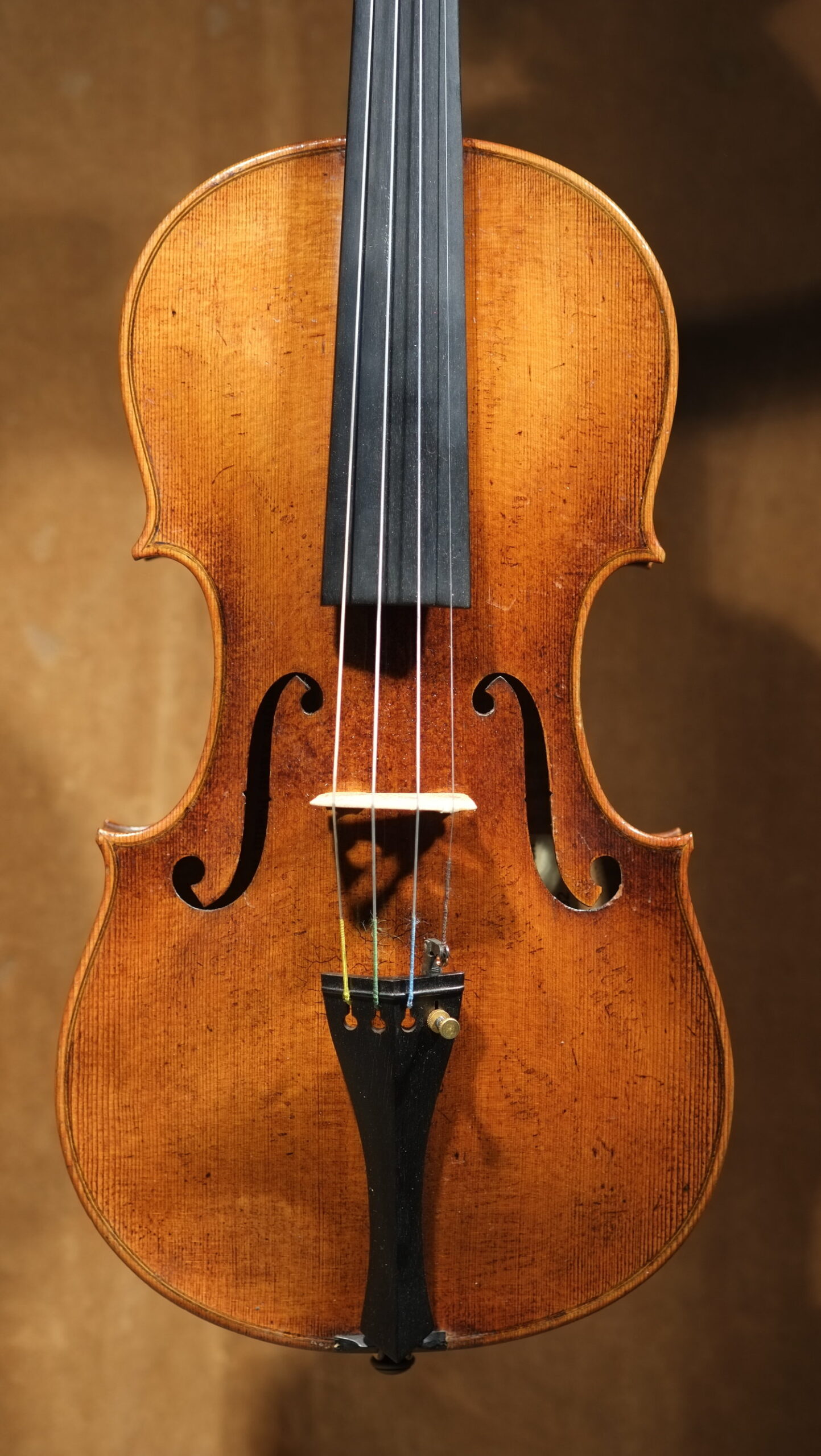
The Erich Weininger Violin: Made in the workshop of Schweitzer, Germany around 1870.
Erich Weininger was a butcher in Vienna as well as an amateur violinist. When the Nazis marched into Austria in 1938, Erich was arrested and sent to Dachau, where he managed to bring along his violin. He later was sent to Buchenwald and though he was not allowed to play there, he still kept his violin.
In a miraculous way, Erich was released from Buchenwald by the help of the Quakers. He then returned to Vienna only to be one of the very last Jews to escape Nazi Europe. He boarded an illegal boat to Palestine, but was soon arrested by British police who did not allow Jews to come to the country. Erich, with a violin in hand, was deported to the Island of Mauritius off the coast of East Africa where he stayed till the end of WW2.
While in Mauritius Erich did not go idle. He started a band with other deportees, playing classical, local and even Jazzmusic in Cafes, restaurants etc. He reached Palestine in 1945. His violin was given to our project by his son, Zeev.
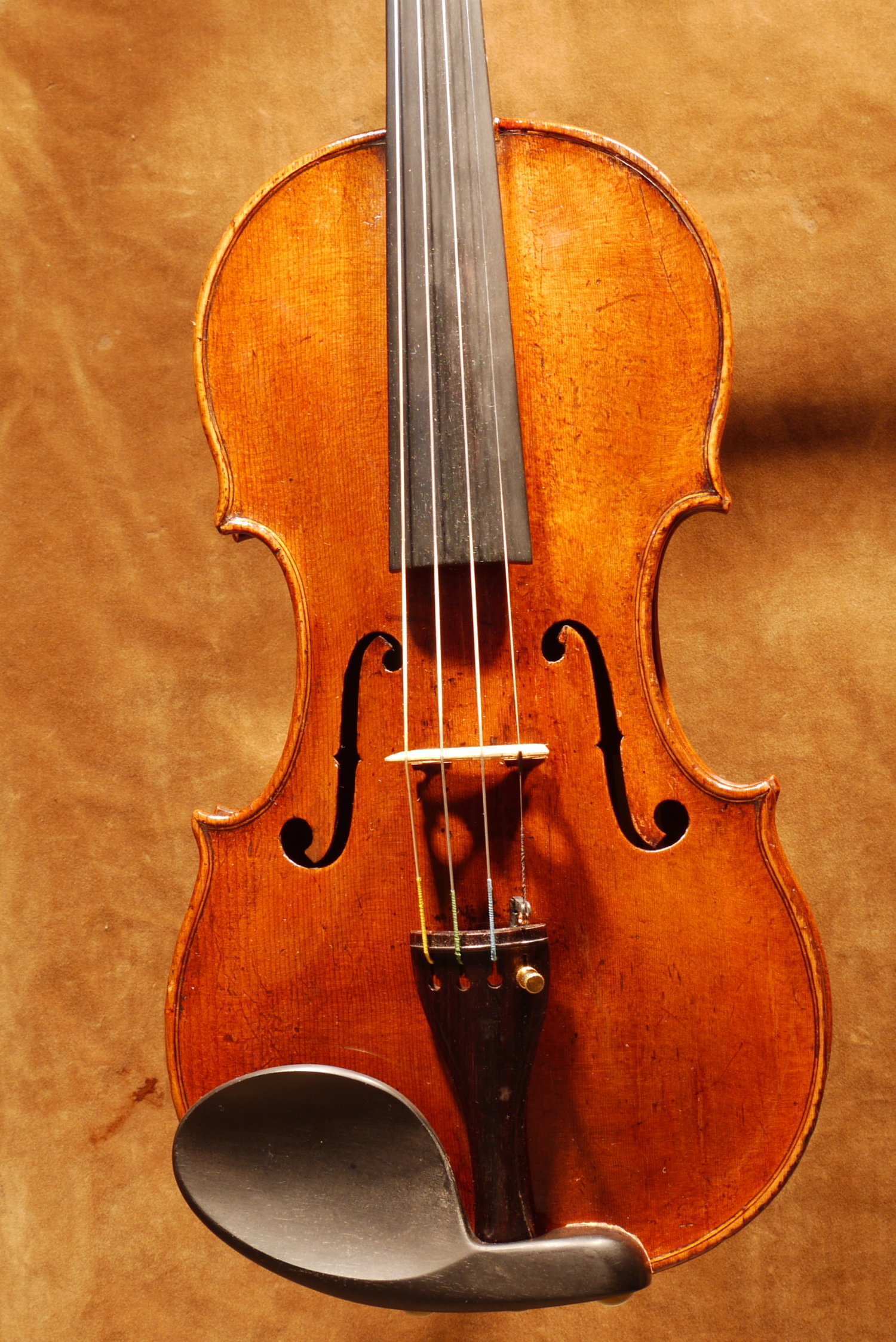
The Wagner and Weichold Violins.
Both fine, high quality instruments belonged to members of the Palestine Orchestra created in 1936 by Bronislav Hubermann. They tell the story and history of the musicians who after 1948 became the IPO – Israel Philharmonic Orchestra, (as told previously).
Most members of the IPO were first rate musicians in European orchestras, but lost their positions when the Nazis came to power in 1933 and racial laws were enforced in Germany. When the war ended there was a general boycott of German goods in Israel. So much so that the name: “Germany” was boycotted on the radio.
In this atmosphere, musicians refused to play on German made instruments and many came to Moshe Weinstein and asked him to buy their violins. “If you don’t buy my violin I’ll break it”, said some. Others threatened to burn their instruments. Weinstein bought each and every instrument, as for him – a violin was above war and evil. Yet, he knew he would never be able to sell them.
After 50 years, those silent violins – come back to life. Those two extraordinary instruments can now be heard in concerts of “Violins of Hope”.
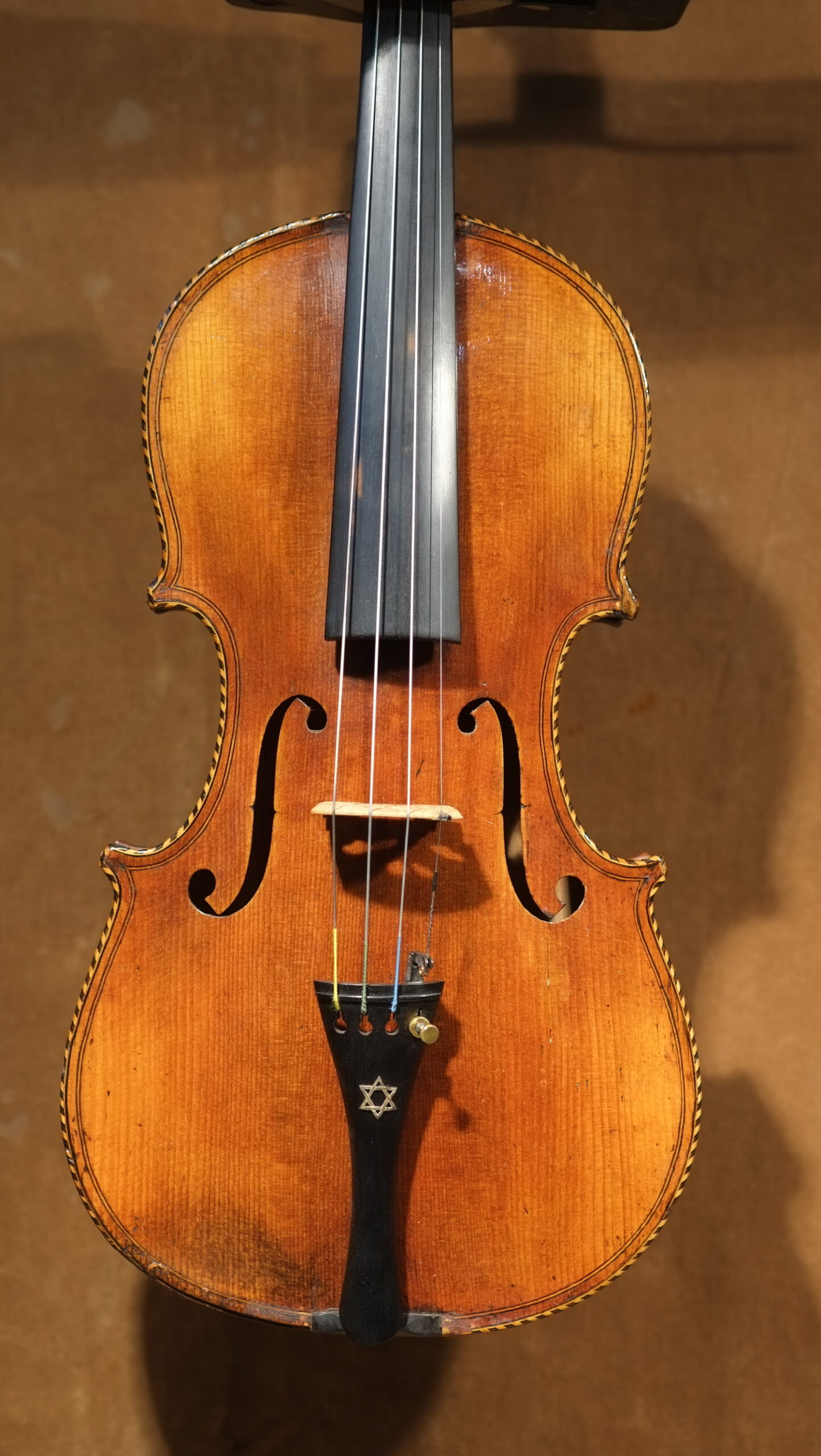
The Bielski Violin, a Kleizer instrument with a mother of pearl star of David. A German made instrument, probably around 1870.
This is a klezmer’s violin. Most klezmers were self-made and self-taught musicians with a natural talent for music. While many arts were not encouraged by Jewish tradition, music became one of the very few venues available to artists.
It was quite common to young children to play violins, as told by I.L. Peretz, the Yiddish writer, who wrote in one of his short stories that one could tell how many boys were in a Jewish family – by counting the number of violins hanging on the wall.
This is probably the reason why so many klezmer instruments were decorated with the most known Jewish symbol – a Star of David. Most klezmer violins were cheap, made in Czechoslovakia or Germany, in shops that specialized in making ornamented violins.
The klezmer tradition was almost lost during WW2, but lately there is some revival in Europe as well as in Israel and the US.
The restoration work of this violin is dedicated to the Bielski partisans who lived, fought and saves 1230 Jews during the war. Assaela Weinstein, Amnon’s wife is the daughter of Asael Bielski, one of the three brothers who formed the Bielski brigade in Belarus.